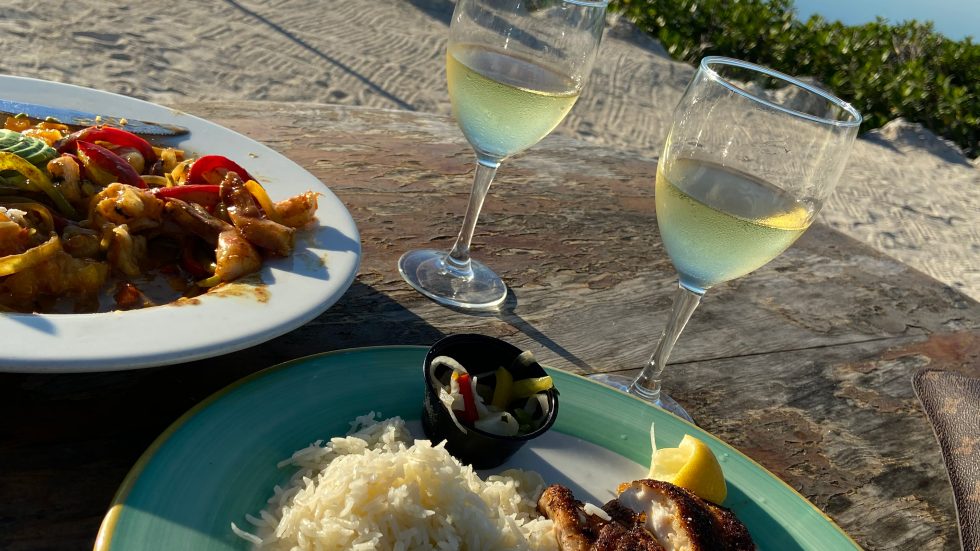Two-and-a-half decades. A quarter of a century. Two-dozen-plus-one boating seasons. No matter how you slice it, 25 years is a pretty long time, and HeartLand Boating has been on the water for every one of them.
Rather than unleash a history lesson on how and why “Mid-America’s Premier Boating Publication” came into being, we thought it would be more informative to look at some of our top stories and why they still matter.
September/October 1989: Tenn-Tom Inaugural Trip
When the Tennessee-Tombigbee Waterway opened in 1985, it provided an alternate route from the Midwest to the Gulf Coast, and a significant boost to recreational boating.
While HLB wasn’t around until four years later, one of our earliest articles recalled the first vessel to travel the 234-mile waterway, the barge tow Eddie Waxler. “It should be remembered that the $2 billion project was built primarily as a barge channel to connect the port of Mobile, Ala., with the Tennessee Valley,” said writer Jeff Yates.
As part of the opening celebration, Army skydivers jumped one at a time from a plane to a landing just upstream of the lock and dam at Columbus, Miss. When each member of the parachute team left the plane, the announcer called out the state he represented and the source of the water he carried with him in a small vial. The last man brought water from Lake Itaska, headwaters of the Mississippi. Those before him delivered water from rivers similarly connected to the Tenn-Tom.
The skydivers poured the water into a funnel connected to a map showing the inland waterways. When the last vial was emptied into it, the secretary of the Army and Sen. Tom Bevill opened a mock valve that allowed the water to spill into the Tenn-Tom. As the water cascaded into the bay, the band started to play and 10,000 balloons were released into the air.
Despite its commercial beginnings, the Tenn-Tom has been a blessing for recreational boaters. Some $50 million of recreational facilities have been built as part the waterway’s growth, according to the Tennessee-Tombigbee Waterway Development Authority.
Today, the Tenn-Tom is well known for its scenic majesty and an abundance of fish and wildlife. Thousands of boats a year traverse its waters, contributing millions of dollars to the local communities, and the waterway has given rise to more long-distance cruising and greater adventures.
June 1990-May 1992: Houseboating Heritage Series
Few publications can claim to have covered the evolution of the houseboat with as much enthusiasm as HLB. But then, one of the most unique features of “Heartland boating” is the houseboat.
“The rivers and lakes of our area abound with these boxy, low freeboard boats,” said our article from June 1990. “Their utility, versatility and comfort are ideally suited to our waters and shores. And the development of the houseboat has unfolded within the lifetime of our older boating friends.”
Our six-part series described the modern houseboat as a descendant of the colorful riverboats that are part of our nation’s history. “In the period between 1800 and 1840, vessels known as flatboats were the equivalent of the ‘prairie schooners’ for the many who floated their life’s belongings downriver to new home sites. In the early 19th century, steamboats began replacing these ‘boats that never came back.’ A few flatboats remained tied to river banks for years afterwards as floating homes.”
These relics gave way to “shantyboats,” which served as inexpensive shelter and vacation homes for lower and middle class families. Then, in the late 1930s and 1940s, the first motorized houseboats appeared, simple shantyboats converted with automobile engines.
The 1950s set the stage for the golden years of houseboating that were to follow, with builders such as Sumerset, Lakeliner and Pluckebaum coming onto the scene. But it was Bill Wilcutts’ fiberglass Drift-R-Cruz that truly brought houseboats in direct competition with cruisers.
Growth and sophistication boomed throughout the ’60s and ’70s, until large surpluses finally resulted in houseboat manufacturers reverting to smaller inventories and more diversified designs in the decades to come.
The industry continues to produce lower numbers of houseboats than the peak years of the ’70s and ’80s, and the number of manufacturers has been considerably reduced, but there has never been any reduction in the affection people have for this type of boating.
January 1996: GPS and the Complete Navigator
“Is GPS for you?” It seems silly now, but that question started our 1996 article on the Global Position System. Price, size and reliability were on their way to being much more reasonable for the recreational boater, and onboard navigation would never be the same.
“Marine navigation has seen many technological advances through the ages, beginning with the invention of the magnetic compass (probably around the 11th century A.D., although some historians think it may have been in use by the Chinese at a much earlier time period). Then came the consensus that the Earth was round (not accepted by mariners until the 15th century A.D., although astronomers had believed in it since 1000 B.C.); and then the chronometer (18th century A.D.),” wrote HLB contributor Earl Hinz. “In their day, each of these was a revolutionary development enabling outstanding improvements in marine navigation. Now, within our own lifetime, we are experiencing a fourth significant revolution in navigation — the GPS.”
Prior to the availability of GPS, it took a reasonable amount of knowledge and the use of paper charts, dead reckoning and LORAN for boaters to determine their position. After GPS, even a novice boater can find themselves using electronic charts and chart plotters. Boat speed and heading are also provided with an amazing degree of accuracy.
“Educators need to revise their navigation curricula to recognize that the popularity of GPS makes it the driving force in marine navigation today,” Hinz said. “Traditionalists will call it heresy, but celestial must now be viewed as the critical backup to GPS.”
As time has shown, yes, GPS is for us. But don’t forget those paper charts just in case.
January 1998: The Tennessee River 600
Personal watercraft (PWC) took us by storm in the ’80s and ’90s, and while the much maligned “wet bikes” began their lives as toys, it wasn’t long until people started pushing the envelope.
In 1995, Earl Wallace and Steve Mohon took a dare and ended up riding their Sea-Doos all the way from Buchanan, Tenn., to Knoxville — 600 miles up the Tennessee River. Afterward, they turned their navigation notes over to Price and Kay Hopkins, who took the show on the road, so to speak, by spreading word about the route, getting sponsors and creating the Tennessee 600.
HLB was along for the inaugural ride in 1997. “I’m convinced Price, Kay and the others had absolutely no idea of what they had gotten themselves into when they started planning this trip,” wrote Glenn Yarbrough. “Day one began with 135 PWC carrying about 220 riders idling out of Paris Landing Marina into the main river channel. Finally came the anticipated words, ‘Blast off!’ The water roiled as the engines roared — after nearly a year of planning and dreaming, we were finally underway.”
The trip took six days (not Wallace’s and Mohan’s original four) and along the way the riders endured surprise thundershowers, strong winds and waves, dense vegetation that clogged intakes, and high water and swift currents. But “spirits remained high and everyone seemed excited to finish the cruise,” said Yarbrough. “Trips like the Tennessee 600 are wonderful adventures. When this many people put forth such as effort, good times happen.”
Now entering its 18th year, the Tennessee River 600 has attracted hundreds of riders representing as many as 19 states, and to date has raised a total of $191,853 benefiting two children’s hospitals and the Tennessee Wildlife Resources Agency (TWRA). It’s thought to be the longest running organized event for personal watercraft in the U.S.
March 1998: Heartland Hero
All of America knows him now as the 2013 CNN Hero of the Year for dedicating his life to cleaning up the U.S. waterways. But we knew Chad Pregracke back in 1998 as a 22-year-old with a dream to save 1,200 miles of Mississippi River shoreline from Guttenberg, Iowa, to St. Louis, Mo.
“After two years of having his dream labeled as ‘crazy’ and repeatedly having people telling him he couldn’t do it, Chad set the plan in motion. That’s when he began his one-man effort to clean up the river,” write contributor Gary Kramer.
Pregracke would move his houseboat to a backwater near an area he targeted and would then tow a large cargo trailer to a nearby launch ramp. Using his jon boat as a garage skow, he would remove trash from the shore and load the trailer until he had a full cargo to take to the salvage yard. Day after day, mile after mile.
Later that year, Pregracke founded Living Lands & Waters, a non-profit business dedicated to continuing the river cleanup on a larger scale. When we visited him again in 2010, Living Lands & Waters was coordinating cleanups involving thousands of volunteers and collecting tons of garbage from the inland waterways. In addition, the organization had started planting nut-bearing trees along the riverbeds to entice more wildlife and was hosting workshops and watershed conservation initiatives.
In naming Pregracke its 2013 Hero of the Year, CNN proved that one man’s dream can develop into big-bang proportions. Over the past 15 years, he has helped pull more than 7 million pounds of debris from the Mississippi, Ohio, Illinois, Missouri, Potomac and Anacostia rivers.
“Picking up garbage, it’s tough, miserable and hot. We try to make it fun,” Pregracke said. “A lot of people call me a conservationist or an environmentalist, but the thing is, I’m no different than anybody else. I just want to be known (as) a hardworking American.”
Editor’s note: Want to read more articles from our first 25 years? We’ll be posting these and other landmark stories on our website throughout 2014.





